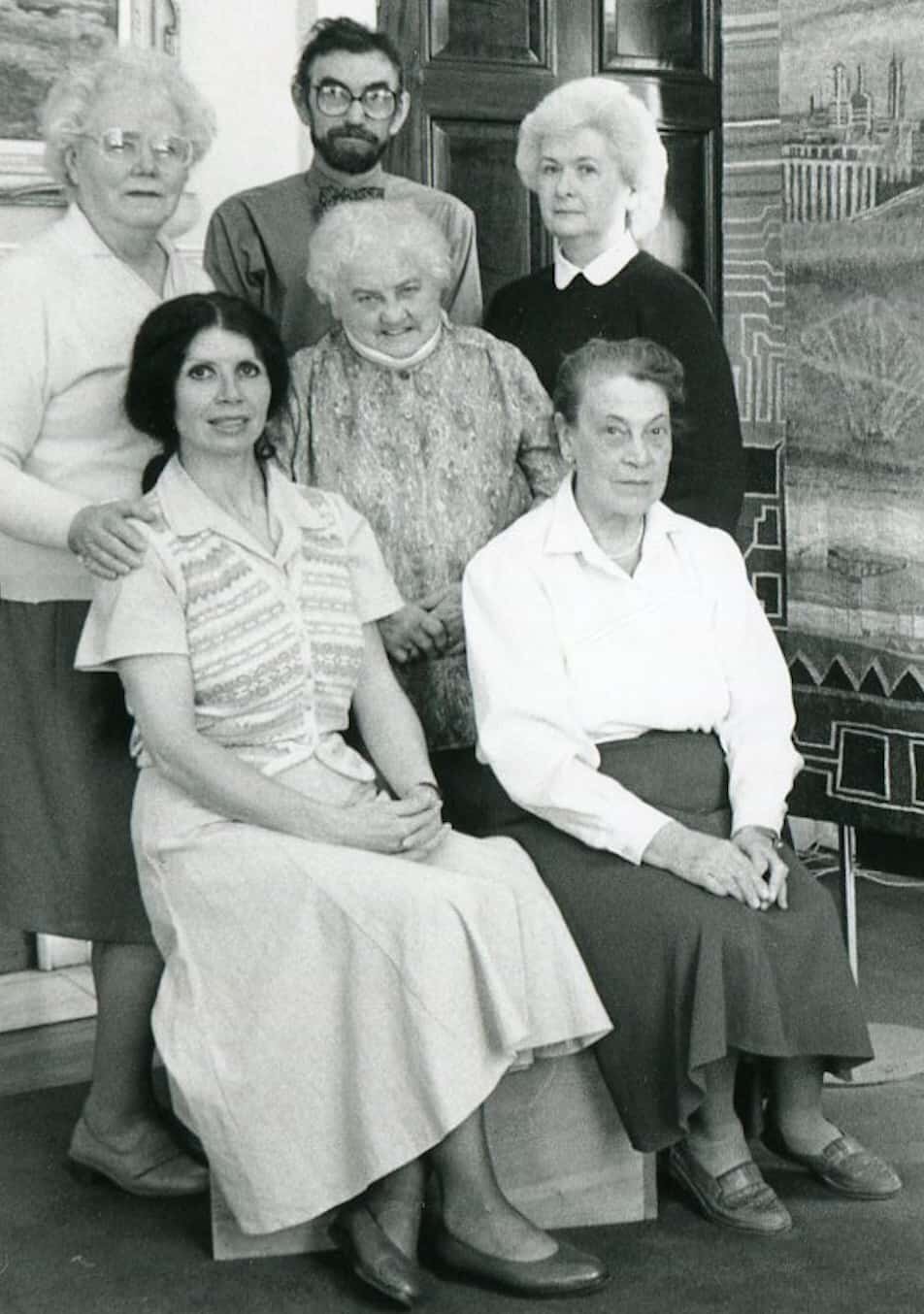In celebration of Women’s History Month, this month’s blog will take a closer look at the Dunfermline Tapestry, woven by a group of local women thirty years ago.
Image: Our Curator condition-checking the tapestry
I came across this tapestry while auditing our museum’s textile collection. I had seen photographs of it before but because of its size (it is 5 1/2 feet square), I had not had an opportunity to take a look at the work itself. During this winter, I finally got a chance to unwrap it in the museum hall. It is always fascinating to see history unravel in front of your eyes!
Image: Erika Ward (front left) with some of the ladies who wove the tapestry, and local designer Brian Keany.
This tapestry is one of three textiles commissioned by the Carnegie Dunfermline Trust in the 1980s to record town’s heritage. It was designed by Erika Ward (nee Betty), a Dunfermline-born textile artist. Woven in Gobelin technique using an upright metal loom, it took almost four years (4000 hours!) to complete by a group of seven talented local ladies.
Image: Birthplace cottage on the tapestry
For this work, Erika Ward chose a viewpoint from the South-West, close to Dunfermline High School (near Hospital Hill) - a panorama that was she was very familiar with as she attended Dunfermline High School herself. The field, Elgin Industrial Estate, houses, and streets gradually draw the eye upward to the skyline of the Dunfermline High Street and the Abbey. The Carnegie Birthplace Museum with its distinctive red clay tile roof can be spotted in the middle. Back then, the main road from Nethertown to St Margaret Street still ran past the museum’s doorstep.
Image: Detail from the finished tapestry
In addition to the finished tapestry, our collection also holds Erika Ward’s hand-drawn design with notes written on the margins, instructing, amongst others, for the tapestry to be “woven in a highly textured way in the style of ‘Fife’”. Apart from the town itself, the tapestry is indeed very three-dimensional - one could almost literally disappear in its wheat fields, flowery meadows, Pittencrieff Park and coal-rich soil. Creating such life-like textures and incredibly detailed townscape required a huge amount of skill, time and dedication, volunteered by an amazing group of local women!
Image: Erika Ward’s design for the tapestry
It was also important for the designer that the tapestry was made by using materials historically used in the weaving industry - such as sisal, flax, linen and cotton. By referencing various artistic styles, historical industries and materials linked to the history of Fife, the designer has created a unique snapshot into the story of Dunfermline. It is a real privilege to share the work of these amazing women with you all and I am delighted that weaving the history of Dunfermline is not just a project of the past - the latest Dunfermline Tapestry project, led by textile artist Bethany Snaddon, will be exhibited at the Dunfermline Carnegie Library and Galleries this year.











